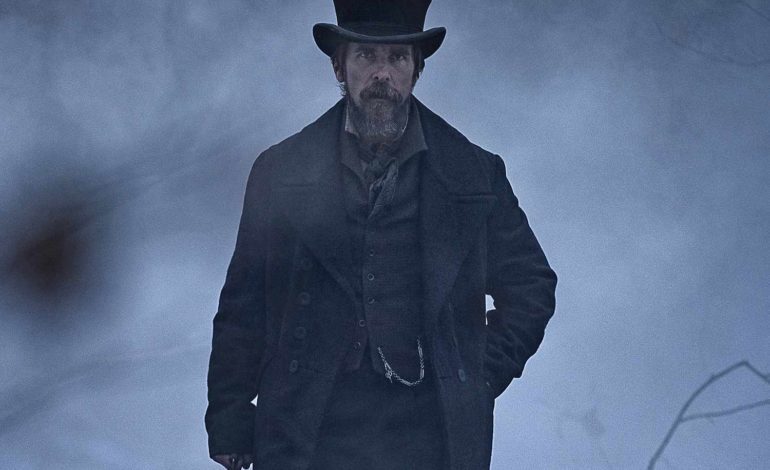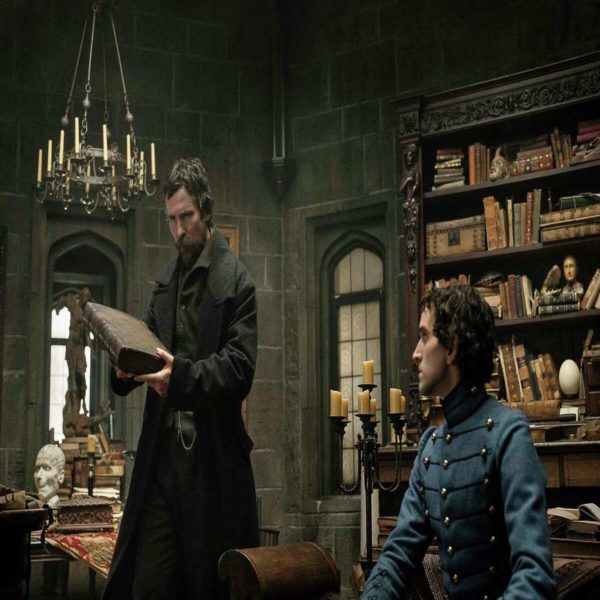

The age of streaming has brought about many changes within the cinematic medium, each with significant consequences. As the first and most daring pioneer, Netflix seems to hold the fate of movies in its invisible hands. The content Netflix provides fluctuates wildly in quality, with quantity never lacking. Thus, the divide between what becomes a theatrical release and what becomes a streamer becomes even more divided. The most logical pathway would appear: companies would save their critical darlings and guaranteed franchise blockbusters for the big screen and keep the small stuff for home watchers. Instead, Netflix chooses to walk a fine line.
The Pale Blue Eye, a film based on the mystery novel written by Louis Baynard, is a case in point. The film stars Christian Bale as renowned detective Augustus Landor hired to solve the issue of some suspicious murders at a military academy. To help him with the case, Landor enlists Edgar Allen Poe (Harry Melling), a student in residence. After some Sherlock Holmes-ian digging and a twist, M. Night Shyamalan might leave on the drawing board before going in a different direction, the film ends, and the case is solved.
Clearly, Netflix spared no expense; the first indication is that they hired Christian Bale to lead the film with a character that is given little to do but stand and listen. The film is beautiful, from the scenery to costuming. Whatever they paid for the cinematographer was undoubtedly worth it, as the film’s best part is the expansive snowy landscapes that appear larger than life. The story, however, does not match the grandeur of the visuals. It moves slowly and provides little satisfaction or intrigue when the mystery is solved. As the famous poet Melling overdoes it just a smidge, this hardly matters because the film’s end leaves the viewer questioning the point of involving Edgar Allen Poe’s persona. His countenance is presented like Bale’s – a sort of literary clickbait.


It would be interesting to see how The Pale Blue Eye would play in a theater, mainly because it is challenging to refrain from looking at your phone during the film’s second hour. However, it’s a league better than many attempted theatrical runs in both craft and story. The undivided attention of the masses would likely lead to a little more online discussion, at the very least. Therein lies Netflix’s specific brand. They have the occasional awards film (Roma, The Irishman, etc.) and mindless tv shows that one can put on the background while folding laundry (Love Is Blind, The Circle, etc.), but they also have the power to put A-list talent in B movies.
In both production and distribution, Netflix is the king of B. The Pale Blue Eye is perhaps the most remarkable example of what Netflix can do, but this begs the question of future work quality. The best thing about Netflix is their willingness and ability to provide a variety of filmmakers of different cultural values with the means to make their dream projects. The worst part about the company’s cultural dominance is the constant barrage of content, some of which is meant to spend more time on their service and finally give in and buy a subscription.
The Pale Blue Eye results from the imbalance when maximalism and money are the ultimate goals. It’s fine in passing, but a surplus amount of untapped potential lies in wait. Netflix can get Chrisitan Bale, but that doesn’t mean it automatically makes a quality flick. Mediocre movies have been in production as long as movies have been in existence, but we’ve likely never seen so much of them. The consequences of these are not dire. Instead, they are interesting to observe as we all participate in the significant media experience of streaming services. Perhaps The Pale Blue Eye would have turned out differently had it ended up at the local AMC. Perhaps nothing would have changed, and somebody would have lost a lot of money. It’s a mystery that will be solved eventually, and hopefully in a more entertaining fashion than is depicted in the film in question.
